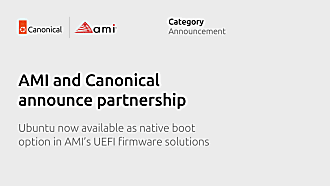Udi Nachmany
on 16 April 2015
Using Snappy Ubuntu Core on Certified Public Clouds

In December we announced Snappy Ubuntu Core for the public cloud, and its availability in beta on Microsoft Windows Azure, Amazon Web Services and Google Compute Engine, as well as Vagrant. Snappy is the smallest, leanest Ubuntu ever, perfect for ultra-dense computing in cloud container farms, Docker app deployments or PaaS environments. Since then, we’ve written at length about Snappy’s exciting applications in the IoT space, from Raspberry Pi to drones and more.
We’ve received numerous enquiries from other cloud partners, interested in how they can deploy Snappy to their users. The good news is that our Certified Public Cloud and Public Cloud partners can offer official Snappy Ubuntu Core images to their users in much the same way they’re doing now with Ubuntu virtual machine images. And using the OVA standard – as we in announced January – means deployment is streamlined on virtually any hypervisor.
It’s important to note here that image updates work a little differently though when it comes to Snappy: both the kernel and all system updates are flattened, and rolled up together in one single image download and update. So, working with our named partners offering access to our official images is probably the easiest and only secure way forward.
As an example, take Brightbox, our first European Certified Public Cloud partner, based in Leeds. Brightbox is famous for its platform’s ease of use and has a loyal devops following. Due to the transactional nature of Snappy, Brightbox’s users now have a fast, reliable and more secure way to dive into containers using technologies like Docker. What’s more important, it enables users of Brightbox to do so at production scale.
But that’s not all – on the SaaS side, London-based startup Cloud 66, which offers full stack container management as a service, is also excited about Snappy. Their product allows developers to build, deploy and maintain containers on several cloud providers including our partners AWS, Google Cloud, and Azure, and is used by around 7,000 developers on a daily basis to deploy and manage containers on more than 3,000 servers. The team at Cloud 66 is always looking to establish and promote best practices inside and outside containers – and that’s why we are delighted that they have chosen to use Snappy Ubuntu Core as the approved and recommended OS for all of their customers.



